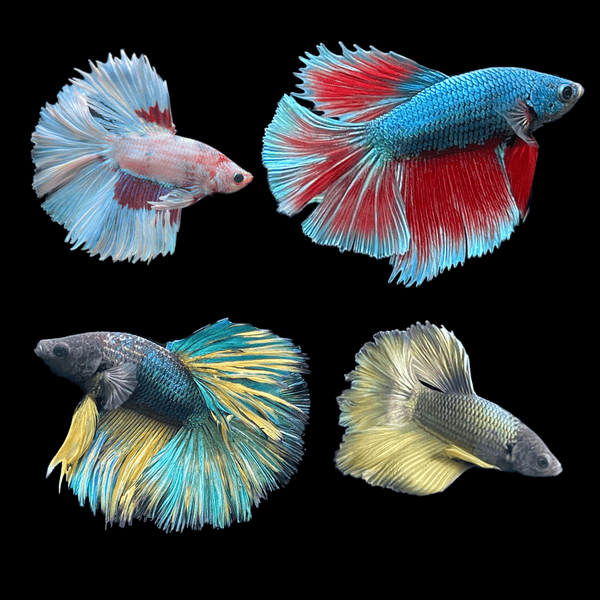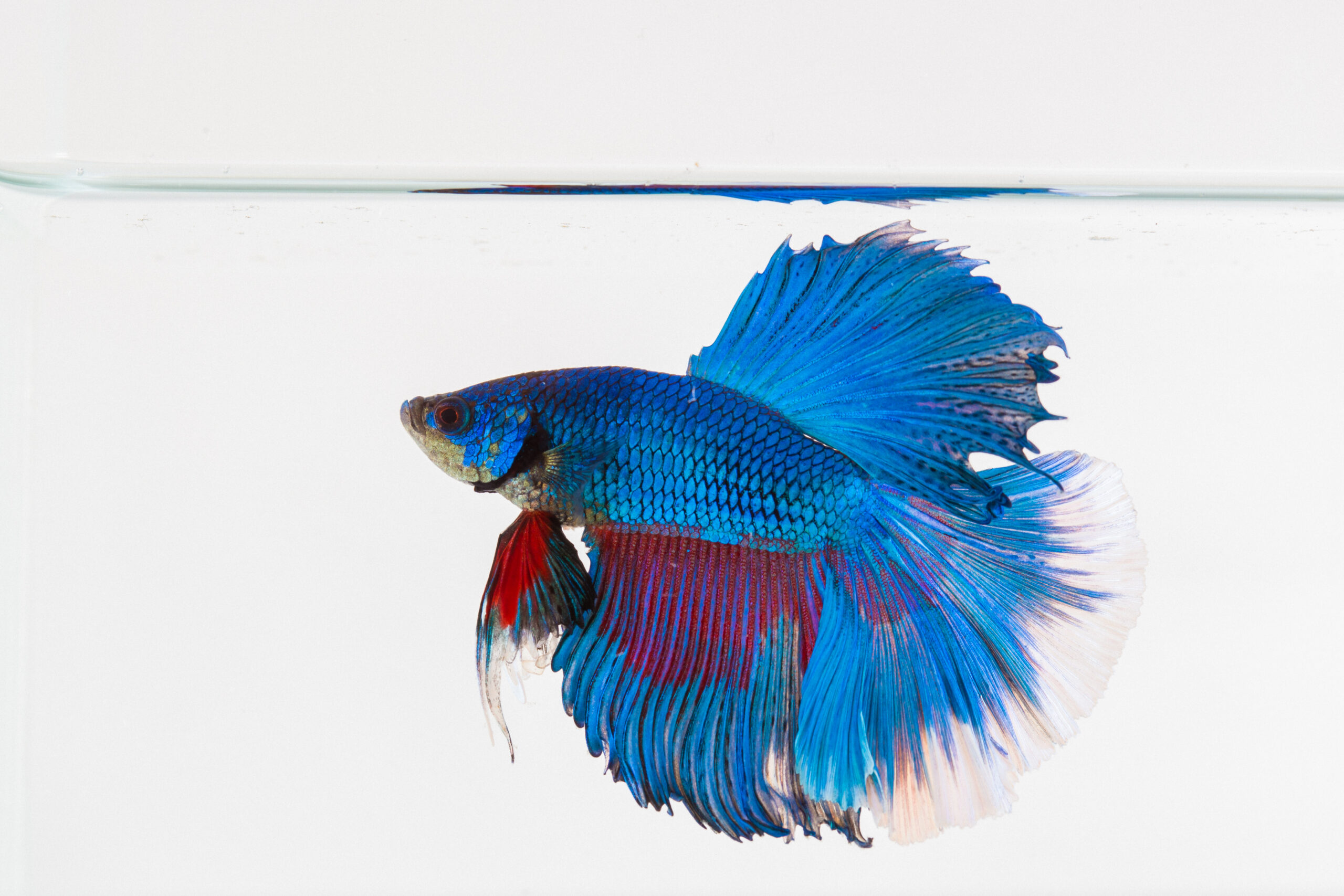The Ultimate Betta Fish Treatment Guide for New Pet Dog Owners
The Ultimate Betta Fish Treatment Guide for New Pet Dog Owners
Blog Article
Reproducing Betta Fish: a Comprehensive Step-By-Step Overview to Effectively Raising Infant Bettas From Eggs to Their Adult Years
Reproducing Betta fish is a precise undertaking that requires cautious preparation and implementation to make sure the successful advancement of fry from eggs to develop fish. As the male Betta diligently constructs a bubble nest and guards the priceless eggs, the succeeding phases of care and shift need attention to information and understanding of best methods.

Selecting Reproduction Pairs
When starting the journey of reproducing Betta fish, selecting the appropriate reproduction sets is important to accomplishing preferable qualities and a healthy lineage - betta fish. The initial step in this procedure is to identify the details traits you wish to boost or preserve, such as color, fin type, and physique. It is vital to choose genetically varied sets to avoid inbreeding, which can lead to wellness problems and unwanted attributes
Evaluate possible reproducing candidates very carefully. A healthy male Betta should exhibit vivid colors, an energetic demeanor, and well-formed fins, while the lady ought to also display vivid coloration and a rounded stomach, indicating readiness for spawning. Observing the personality of both fish is vital, as aggressive or extremely reluctant people might not reproduce efficiently.
Keeping documents of the moms and dad fish's ancestry can help you track genetic attributes and prospective concerns. Inevitably, spending time in the selection process will dramatically enhance the likelihood of creating strong, vivid offspring that fulfill your breeding objectives.

Preparing the Breeding Tank
Producing an ideal reproduction atmosphere is a vital action after picking suitable sets for Betta fish. The breeding tank need to be particularly developed to offer convenience and stimulate the all-natural reproduction habits of the fish. Start with a tank size of a minimum of 10 gallons to make sure adequate area for both the male and women Bettas.
Preserve a mild filtration system to keep the water tidy while staying clear of solid currents that can stress the fish. In addition, an air rock can be included in give oxygenation without interfering with the water surface as well much.
Temperature level guideline is crucial; go for a stable range of 78-82 ° F(25-28 ° C) making use of a reliable heating unit. The pH level should be maintained in between 6.5 and 7.5, and regular water modifications are necessary to make certain high water quality.
Include drifting plants or generating mops to develop concealing places for the woman, while also motivating bubble nest structure by the man - betta fish. Make sure the container is complimentary from sharp designs and any kind of possible threats, as the well-being of the fish need to constantly be focused on during this important stage of his explanation reproduction.
The Reproduction Process
Typically, the breeding process for Betta fish involves a collection of distinct and observable actions that suggest readiness for recreation. The male Betta begins by building a bubble nest at the water's surface area, which functions as a website for the fertilized eggs. This nest is essential, as it gives a secure atmosphere for the eggs until they hatch out.
When the nest is established, the male will present courtship actions, such as flaring his fins and showing vibrant colors to bring in the lady. The woman, upon sensing the male's preparedness, will certainly react by presenting upright red stripes along her body, signifying her receptiveness.
When the female techniques, the male participates in a mating dance, usually causing an embrace recognized as the "spawning." Throughout this embrace, the woman releases her eggs, which the male feeds instantly. The fed eggs then drop to the bubble nest, where the male meticulously accumulates and returns them to the nest. Following this, the male presumes obligation for safeguarding the nest and guaranteeing the safety and security of the eggs until they hatch out, commonly within 24-36 hours. This stage is important in the breeding procedure, laying the foundation for effective fry growth.
Taking Care Of Betta Fry
Looking after Betta fry needs cautious interest to their atmosphere and nutrition to ensure healthy and balanced growth and advancement. After hatching, Betta fry are extremely tiny and vulnerable, requiring a steady and tidy habitat. Maintaining a water temperature in between 78 ° F and 80 ° F is crucial, as Betta fry thrive in warm problems. Furthermore, make certain that the water is devoid of damaging contaminants; routine water modifications of 10-20% are advised to preserve optimum water top quality.
Feeding Betta fry is equally essential. Feed them little quantities a number of times a day, being cautious not to overfeed, which can lead to water high quality problems.
Transitioning to Adult Bettas
As Betta fry fully grown, transitioning them to grown-up Bettas is an essential phase that requires cautious management of their environment and social interactions. This procedure generally begins when the fry get to around 6 weeks old, whereupon they can be slowly introduced to a more structured living setting.
To promote this transition, it is vital to make sure that the water specifications-- such as temperature level, pH, and ammonia levels-- are optimal and secure. Grown-up Betta fish grow in warm water (around 78-80 ° F) with a pH of 6.5 visit the site to 7.5. Gradually adapt the fry to these conditions to reduce stress.
Social communications are an additional vital variable; male Bettas are notoriously territorial and aggressive. For that reason, it is advisable to different men right into specific storage tanks as they grow. Female Bettas can be housed together, yet care should be required to keep an eye on for indications of aggressiveness.
In addition, dietary changes must be made as the read this fry expand. Incorporate premium pellets and live foods to sustain their growth and health. By taking care of these aspects properly, you can promote a successful shift to their adult years for your Betta fish.

Conclusion
Successful reproduction of Betta fish requires cautious focus to detail throughout the entire process, from selecting genetically diverse sets to offering optimal take care of fry. By guaranteeing ideal breeding problems and maintaining water quality, the likelihood of healthy children enhances considerably. In addition, a well balanced diet and gradual adjustment to grown-up atmospheres are critical for the growth and growth of Betta fish. Following these actions faithfully promotes a prospering population of Betta fish, enhancing both their health and wellness and vigor.
Report this page